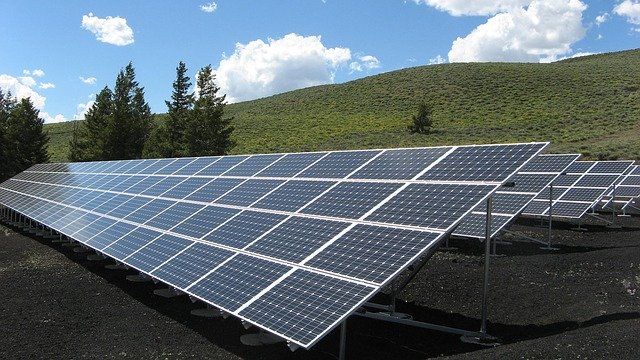By Thomas Eisenbarth, Head Business Development, aream Group
Germany is back on the solar world map. In terms of installed new systems, capacity rose from three Gigawatt Peak (GWp) in 2019 to 49.2 GWp. This puts Germany in fourth place worldwide behind China, the USA and Japan - and is the leader in Europe. Italy only achieves 20 GWp, Spain only 8.7 GWp.
With 47.5 terawatt hours (TWh), photovoltaic systems in Germany already supplied eight percent of gross electricity demand in 2019, according to the Arbeitsgemeinschaft Energiebilanzen e. V. (Working Group on Energy Balances), and the trend is rising. And the expansion continues: more systems will be added to the approximately 1.8 million already installed. Although subsidies for solar plants are coming to an end, Germany is developing into a hotspot for solar investments. Falling prices for modules and rising prices for green electricity continue to make expansion very attractive. Due to the reduced expenditure, electricity production costs for new systems of around 0.03 euros per kilowatt hour (kWh) are possible. In the opinion of the Association of German Engineers (VDI), even electricity generation costs of less than 0.01 Euro/kWh will be possible for existing plants once the depreciation period expires.
In addition, the demand for renewable energies will increase in the coming years due to the coal and nuclear phase-out, the increasing hunger for energy due to digitalization and the rise in electric vehicles. In addition, more and more companies want to improve their ecological balance sheet and use green electricity. Initial discussions are even talking about an impending shortage of green electricity, which would make electricity from renewable energies even more valuable and thus more expensive. Through the smooth and rapid development of new solar parks, compared to the development of wind projects, Solar has a decisive advantage in winning the race for the required capacities in Germany.
Politicians have also followed suit: In June 2020, the German parliament lifted the solar cap that had been in force in Germany until then, which had been based on an expansion volume of 52 GWp. This would not have been enough to achieve the energy turnaround. According to the "Climate Protection Program 2030 of the Federal Government for the Implementation of the Climate Protection Plan 2050", the share of renewable electricity is to account for 65 percent of gross electricity consumption by 2030. At present, the net electricity generation in German power plants for the public power supply is 54.1 percent (as of 18 August 2020, 10:25 a.m. ¹). The solar share is already at 12.8 percent.
Due to the expiration of subsidies, the revenue side will be determined in the future by power purchase agreements (PPAs), which are concluded with companies or large power generators. Further revenue potential will result from professional contract management and active marketing of this attractive electricity production.
There will also be a lot of activity in the management of the plants: In the future, systems with artificial intelligence will take over the monitoring and evaluation of the plants during operation. This will save maintenance costs and alert the customer in good time to impending problems, so that the availability of the plants will increase steadily.
All this has not gone unnoticed by institutional investors. Both those who invested in the renewable energy market early on and new investors appreciate the reliability and good predictability of infrastructure investments in this sector. Added to this is the independence from established asset classes such as shares, bonds and even real estate. Renewable energies have proven this impressively during the hot phase of the Covid-19 pandemic: Unphased by the shutdown, the plants continued to produce electricity and were a reliable investment in the turbulent markets.
Now is therefore the right time to invest in this growing market - either as an initial investment or to expand the existing portfolio of older plants. This is especially true for investors with an overweight in wind investments, as solar investments provide an almost natural hedge against the volatility of wind turbines. They have a balancing effect on the portfolio and thus provide more stable returns from this asset class.
1 Source: 50 Hertz, Amprion, Tennet, TransnetBW, Destatis, EEX
